Photographer Koto Bolofo captures the new Design Museum’s transformation
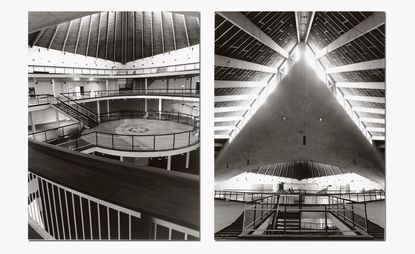
When photographer Koto Bolofo first visited London’s Commonwealth Institute in 2011, he found a forgotten architectural relic in the centre of London. Shrouded by park trees, overgrown with wild strawberry plants and home to a family of foxes, ‘it was like a dormant cathedral,’ he remembers. ‘Despite the buzz of the traffic whizzing past on Kensington High Street, you wouldn’t even know it was there. That was the strange thing.’
The visit had followed a call from his long-time friend, design entrepreneur Sophie Conran, who is also the daughter of Design Museum founder and trustee Sir Terence Conran. ‘She said, “You know the Commonwealth Institute?’’’ says Bolofo, retelling the conversation. ‘Well, my dad’s bought it and he’s going to turn it into the new Design Museum. Would you like to photograph the renovation?’
South African-born, London-based Bolofo, famed for his award-winning fashion photography and films, was apprehensive about taking on his first ever architectural project, but agreed to a test run. At the time, the 1962 Grade II*-listed building, just south of Holland Park, had been empty for more than a decade. It was yet to be publicly announced as the museum’s new home and it would be a year before ground broke on its £83m John Pawson-designed facelift.‘I was doing 8-12 second exposures, which I’d never done before, so I wasn’t even sure the pictures were going to come out,’ Bolofo remembers. Happily, the Design Museum were thrilled with his ‘non-architectural’ approach and so he spent the next five years revisiting the site every few months in order to track its transformation.
‘I fell in love with the building,’ he says. ‘I photographed it like I would photograph a woman – for me, it had so much femininity. The lines, the curves, there is absolutely nothing masculine about it.’
As the construction team dug out the foundations to reinforce the structure and stripped the building back to its skeleton, Bolofo captured the still moments in between; the rhythmic twists of the roof trusses, the empty walkways and the piles of debris illuminated by shafts of ethereal light. ‘I know nothing about construction; I had to use my instinct and my knowledge of form in order to document it. It was like watching a butterfly emerge from its chrysalis,’ he says.
With the butterfly now almost fully emerged, the finishing touches are being made to the museum’s interior, while, on the second floor, a dramatic cafe and restaurant space is promising to steal the show. ‘Because it’s such a significant and important building, there is very little we can actually do in terms of design in the interior,’ explains Jay Osgerby of Barber & Osgerby, the design studio tasked with fitting out the restaurant interior. Instead, the duo set about creating a scheme that made the most of the restaurant’s spectacular views outwards across the tree tops of Holland Park and inwards towards the cavernous atrium. For this purpose, the duo developed what they describe as ‘quiet and refined’ pieces of exclusive furniture and lighting that will let the view do the talking. A new wooden chair and a range of upholstery is in development with Vitra, while a number of lighting pieces are being produced by Flos.
The menu, provided by Sir Terence’s food, wine and hotel group Prescott & Conran, will ensure that the whole operation lives up to its founding father’s exacting standards. ‘Seeing this quite remarkable project on the cusp of completion makes me tremble with excitement and anticipation,’ beams Conran, who cites the museum as his most rewarding achievement. ‘It really does feel like our moment has arrived, and seeing the Design Museum move to this magnificent building demonstrates just how important design has become to industry in this country. It makes my rather long career absolutely worthwhile because it is putting design at the very heart of British creativity.’
As originally featured in the October 2016 issue of Wallpaper* (W*211)
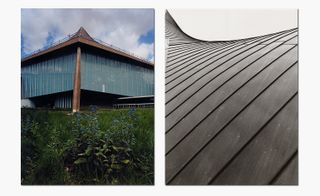
Pictured left: the hyperbolic parabolic copper roof. Right: on the brick and concrete former Commonweal Institute building, designed by RMJM in 1962, as it looked in May 2012

Pictured left: the copper clad roof is held up by an elegant concrete rib structure, adding drama to the space beneath. The restored concrete elements remain visible in the design, as well as the original wood wool panels. Right: the building’s diamond shaped plan was punctured by a round internal atrium at this height. This opening has now been redesigned by Pawson in a rectangular form
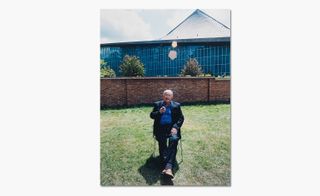
Sir Terence Conran, photographed by Bolofo in front of the museum on 9 August 2016
INFORMATION
Ahead of going on permanent display in the new Design Museum’s atrium in November, Koto Bolofo’s photographs will appear at 34 Cork Street for ’Wallpaper* magazine is 20! Construction Sight’, an exhibition to celebrate our 20th-birthday issue, in collaboration with Cork Street Galleries.
’Wallpaper* magazine is 20! Construction Sight’ is on view through to 8 October, Monday to Saturday 10am-6pm
For more information on Koto Bolofo’s work, visit his website
Photography: Koto Bolofo
ADDRESS
Wallpaper* Newsletter
Receive our daily digest of inspiration, escapism and design stories from around the world direct to your inbox
34 Cork Street, Mayfair, W1S 3NU
-
 2024 RIBA Gold Medal recipient Lesley Lokko: ‘To be valued, understood and seen by your peers is rare’
2024 RIBA Gold Medal recipient Lesley Lokko: ‘To be valued, understood and seen by your peers is rare’Lesley Lokko receives the 2024 RIBA Gold Medal in a dedicated ceremony in London, and talks to us about taking stock after a busy few years, and planning for the future
By Ellie Stathaki Published
-
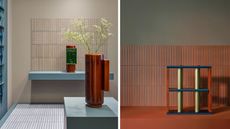 Casa Mutina displays Ronan Bouroullec's creative universe
Casa Mutina displays Ronan Bouroullec's creative universeRonan Bouroullec's designs for Mutina at Milan Design Week 2024 include outdoor tiles as well as ceramic editions
By Cristina Kiran Piotti Published
-
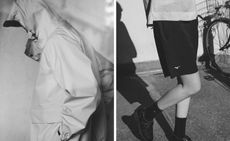 Mizuno for Margaret Howell is this summer’s most considered sportswear
Mizuno for Margaret Howell is this summer’s most considered sportswearThe latest chapter of Margaret Howell’s collaboration with Japanese sportswear brand Mizuno has been revealed, featuring ultra-lightweight fabrications and sleek, utilitarian design
By Jack Moss Published
-
 Studio Lenca nods to Salvadorian heritage with riot of colour in Margate
Studio Lenca nods to Salvadorian heritage with riot of colour in MargateStudio Lenca considers boundaries in ‘Leave to Remain’ at Carl Freedman Gallery in Margate
By Emily Steer Published
-
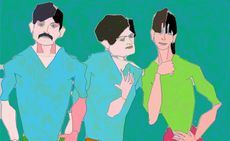 The New York art exhibitions to see now
The New York art exhibitions to see nowFrom MoMA to the smaller spaces, here are the best New York art exhibitions to catch in May 2024.
By Hannah Silver Published
-
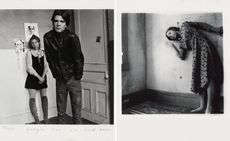 Step into Francesca Woodman and Julia Margaret Cameron's dreamy photographs in London
Step into Francesca Woodman and Julia Margaret Cameron's dreamy photographs in London'Portraits to Dream In' is currently on show at London's National Portrait Gallery
By Katie Tobin Published
-
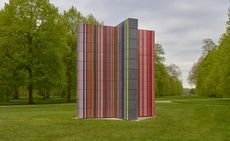 Gerhard Richter unveils new sculpture at Serpentine South
Gerhard Richter unveils new sculpture at Serpentine SouthGerhard Richter revisits themes of pattern and repetition in ‘Strip-Tower’ at London’s Serpentine South
By Hannah Silver Published
-
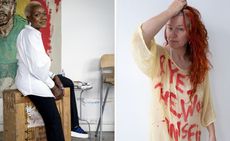 Meet the Turner Prize 2024 shortlisted artists
Meet the Turner Prize 2024 shortlisted artistsThe Turner Prize 2024 shortlisted artists are Pio Abad, Claudette Johnson, Jasleen Kaur and Delaine Le Bas
By Hannah Silver Published
-
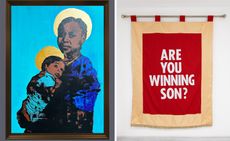 London gallery Incubator’s six emerging artists to see in spring 2024
London gallery Incubator’s six emerging artists to see in spring 2024Incubator's spring programme features six artists in consecutive two-week solo shows at the London, Chiltern Street gallery
By Mary Cleary Published
-
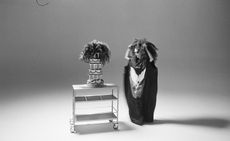 Kembra Pfahler revisits ‘The Manual of Action’ for CIRCA
Kembra Pfahler revisits ‘The Manual of Action’ for CIRCAArtist Kembra Pfahler will lead a series of classes in person and online, with a short film streamed from Piccadilly Circus in London, as well as in Berlin, Milan and Seoul, over three months until 30 June 2024
By Zoe Whitfield Published
-
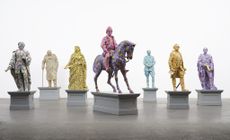 Yinka Shonibare considers the tangled relationship between Africa and Europe at Serpentine South
Yinka Shonibare considers the tangled relationship between Africa and Europe at Serpentine SouthYinka Shonibare‘s ‘Suspended States’ at Serpentine South, London, considers history, refuge and humanitarian support (until 1 September 2024)
By Tianna Williams Published